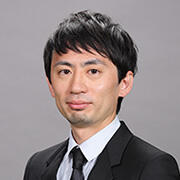Research
Digital Content and Media Sciences Research Division
 KOYAMA Shoichi
KOYAMA ShoichiDigital Content and Media Sciences Research Division, Associate Professor
Detail: https://researchmap.jp/shoichi_koyama?lang=en
WEB
Introduction
■ Fascination with the study of sound
I first got involved in researching sound when I joined Nippon Telegraph and Telephone Corporation (NTT) after completing my Master's degree and was assigned to the audio research team. At the time, we were researching how to transmit and reproduce audio in remote communication, to recreate the feeling of directly speaking to someone face to face. This requires technology to accurately measure the spatial information from actual sounds and reproduce it in a realistic way.
This is a fundamental technology, but the further I progressed with my research, the more challenges and new research topics I found one after another, and I became fascinated by the depth of the physical phenomenon of sound. I also found it hugely rewarding to see the growing potential for applying the findings. I moved from NTT to the University of Tokyo's Graduate School of Information Science and Technology, and then to the National Institute of Informatics (NII), but I continued to research sound, simply because I am fascinated by its study.
■ Establishing a new methodology incorporating physical information
The fundamental technologies that are central to measuring and synthesizing sound include signal processing and machine learning. When it comes to both signal processing and machine learning, a large number of technologies and methodologies already exist, but the application of existing technologies does not actually work very well.
I wondered whether we could establish a new methodology by incorporating physical information into signal processing and machine learning. In other words, the research topic I am currently working on is "signal processing and machine learning incorporating wave field properties for sound space analysis and synthesis".
There are various techniques for machine learning, depending on the purpose. As one example, I am researching deep neural networks that use training data to measure wave fields with a small number of sensors. If you rely on normal machine learning, overfitting tends to occur. This means that when there is insufficient training data, the model does not perform well with unknown data. We can prevent overfitting by training the model under physical constraints.
With VR and AR, you can enjoy realistic sounds through a headset, but it may sound slightly different from what you hear in a real-world environment. This is because each person has a different head-related transfer function (HRTF) which characterizes how the ear receives a sound. Technology using deep neural networks to easily measure and interpolate a person's HRTF is another area of my research.
One topic that I want to explore further is spatial active noise control. Noise-cancelling earphones are already in practical use, but what I am researching is a technology using multiple speakers to reduce unwanted noise in a specific space without wearing devices such as earphones or installing physical sound barriers. Once this technology is established, it could be applied to situations such as remote working spaces at rail stations.
One thing that all my research has in common is that it incorporates physical information. I believe this results in a superior ability to theoretically research fundamental technologies, and going forward, I hope to expand my research with this principle.
■ Addressing social issues by controlling sound
In today's society, thanks to modernization and urbanization, we are surrounded by all kinds of sounds. Because humans have an excellent sense of hearing, artificial sounds cause a great deal of stress. Surveys have found that traffic noise, even at a barely noticeable level, has an adverse effect on the human body comparable to that of air pollution. By refining fundamental technologies relating to sound, my goal is to eliminate social issues caused by sound, such as damage to health, as much as possible.
Sound is a type of wave, just like ultrasonic waves, electromagnetic waves, and light. By understanding sound in detail, our findings could be applied to other types of wave phenomena. Since sound uses different sensing devices from other types of waves, it may take some time before the findings are applied, but I believe various applications will be possible in future.

 Summary of NII 2024
Summary of NII 2024 NII Today No.104(EN)
NII Today No.104(EN) NII Today No.103(EN)
NII Today No.103(EN) Overview of NII 2024
Overview of NII 2024 Guidance of Informatics Program, SOKENDAI 24-25
Guidance of Informatics Program, SOKENDAI 24-25 NII Today No.102(EN)
NII Today No.102(EN) SINETStream Use Case: Mobile Animal Laboratory [Bio-Innovation Research Center, Tokushima Univ.]
SINETStream Use Case: Mobile Animal Laboratory [Bio-Innovation Research Center, Tokushima Univ.] The National Institute of Information Basic Principles of Respect for LGBTQ
The National Institute of Information Basic Principles of Respect for LGBTQ DAAD
DAAD
